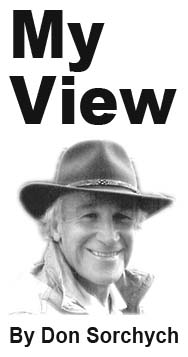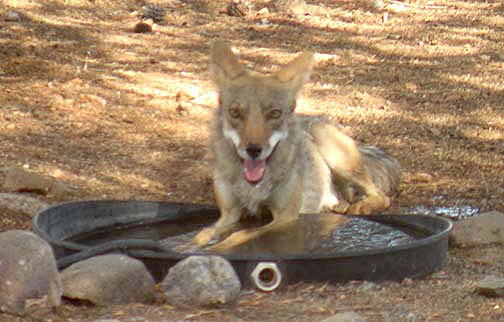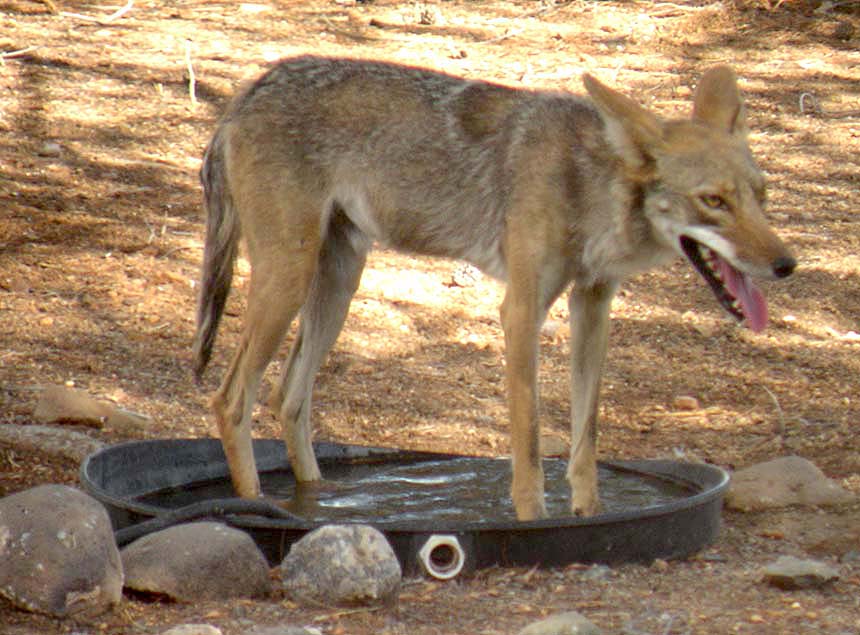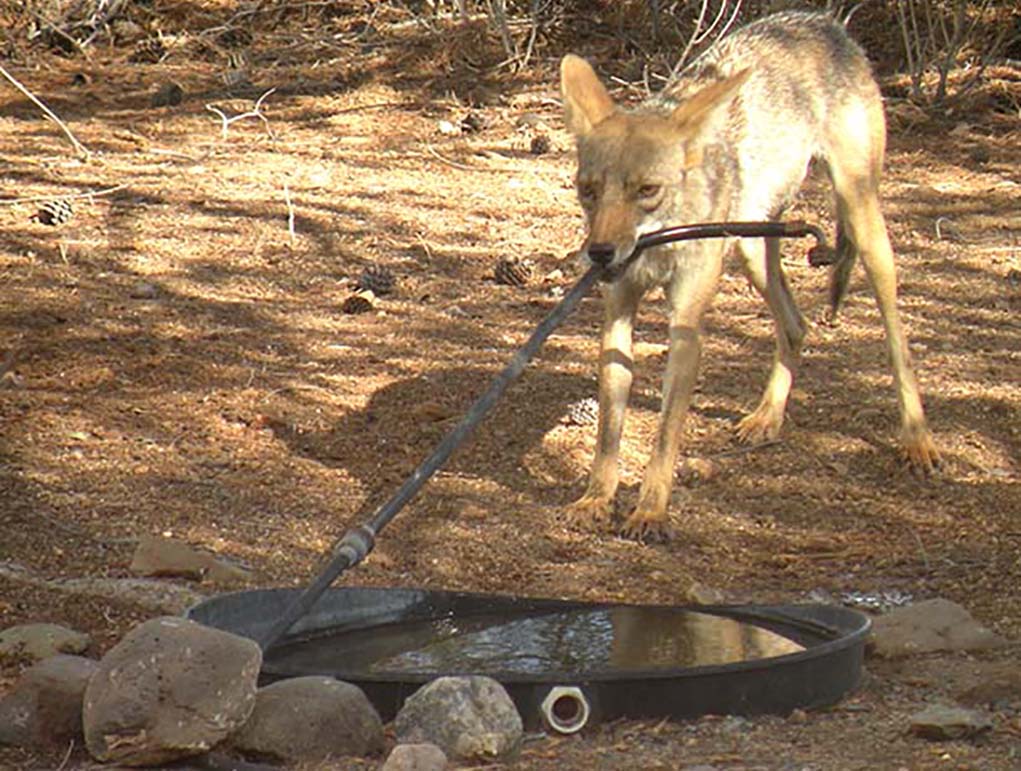 We have two water sources near our pump house in the side yard. One container is about six inches deep and the other two inches deep for baby quail.
We have two water sources near our pump house in the side yard. One container is about six inches deep and the other two inches deep for baby quail.
This location is a favorite for nocturnal visitors, like mule deer, that drink late at night so in the morning both containers are often dry.
The next oasis is on the east side of the house in a clearing overlooked by kitchen widows. Here we see countless varieties of animals and birds. Three species of doves are there most of the day: mourning doves, white wing doves and ring neck doves, an almost white color. The doves spend most of their time mating and the females build crude nests in our courtyard and hatch babies.
Gambel’s quail frequent that location and the males rule the yard. I have seen a lone male chase roadrunners out of the yard. They also feud with other male quail.
Mule deer, rabbits, javelina, roadrunners and coyotes are frequent visitors.
 Shari Jo took a series of pictures of a female coyote (it squatted to pee) drinking on a very hot day. She put two feet and then four feet in the water as if to cool her feet. Then, she laid in the water. Apparently offended by the hose in the water, she grabbed it in her mouth, pulled it out of the dish by biting through the hose and pulling it out of the water. Satisfied, she laid in the shade.
Shari Jo took a series of pictures of a female coyote (it squatted to pee) drinking on a very hot day. She put two feet and then four feet in the water as if to cool her feet. Then, she laid in the water. Apparently offended by the hose in the water, she grabbed it in her mouth, pulled it out of the dish by biting through the hose and pulling it out of the water. Satisfied, she laid in the shade.

Rabbits seem to be tolerated by other guests and hang around a lot in spite of visiting coyotes.
Javelinas are a pain. We see one lone javelina all over the property. Apparently he has been rejected by the herd.
Near dusk nearly every night a herd of up to eight javelin tip over the water container and make mud to roll around in. So I load my pellet pistol and when I sting a butt they leave in a rush. Shari Jo sometimes chases them away by screaming like a banshee until they flee.
The last water source is on the north side of house and is easily seen from a window in the bedroom. It is about eight inches deep and rabbits stand on their hind legs to drink. All sorts of birds drink there too. It is too close to the house to draw larger animals.
We are treated to countless opportunities for wildlife viewing although there are days the containers must be filled several times.





